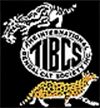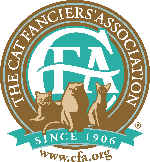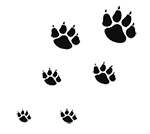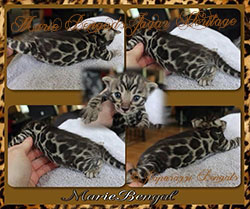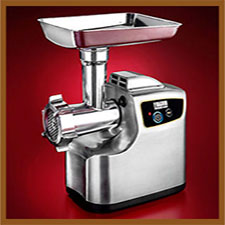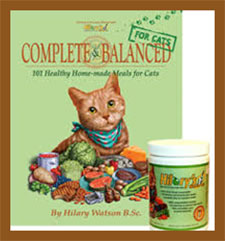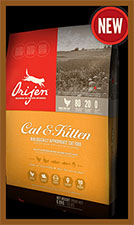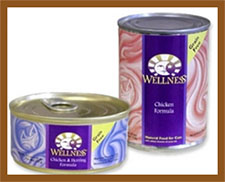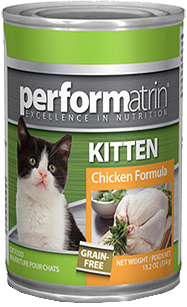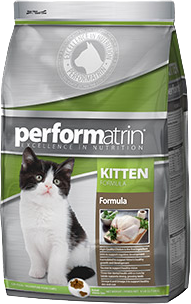NUTRITION AND DIETAll of the cats and kittens at Paparazzi Bengals are raised on a raw chicken diet. Our priority first and foremost is optimum health and we believe that feeding a raw diet will give them optimum heath and a great start to their life. We feed homemade ground raw chicken bones in, mixed with raw beef liver. Not only does the Bengal breed benefits from a raw diet all domestic cat breeds benefit! We have found that cats are less likely to suffer from common cat illnesses, over weight cats will quickly loss weight and underweight cats will gain weight. Raw can be helpful for gastric issues and skin problems, and most cats thrive on raw. Your cat will stay lean and muscular! (note: This is NOT A CURE ALL.) Other benefits from this diet is better oral hygiene, gums, bowl movement a less harder, smaller and it does not STINK! No smell. Also their pelts are shinier, silky soft and more beautiful. And lastly it is less expensive then feeding high quality commercial diets. You will not only save on the food but you will save on litter too because you will be buying litter much less often because it takes a long time to stink up the litter as long as you scoop on a regular basis. Cats are obligate carnivores. This means that they need animal protein. It means that cats lack specific metabolic (enzymatic) pathways and cannot utilize plant proteins as efficiently as animal proteins. It is very important to remember that not all proteins are created equal. They don't need carbohydrates at all. Carbohydrates cause obesity, gum disease and diabetes. They also need more than just animal protein, they need bones to maintain a healthy skeletal structure. An appropriate diet consists of animal protein: raw, living foods (muscle and organ meats), bone, vitamins and taurine.) Cats cannot digest plant-based protein. Unfortunately, most brands of commercial food (canned/dry) contains high amounts of plant-based protein such as: wheat, corn, rice, etc.
Also, cats are designed to get the majority of their water intake from food. They do not have a strong thirst drive such as dogs, and dry kibble will place them in a constant state of dehydration. This can result in serious health issues such as: diabetes, kidney failure, cystitis, IBD, obesity, hepatic lipidosis, dental disease, and asthma. Regarding parasites in raw food: they live in the intestinal tracts of prey animals, and are not passed within muscle/organ meat except in rare instances. To kill toxoplasma gondi (the parasite which causes toxoplasmosis) freeze raw food for 72 hours. When properly handled, raw meat has less bacteria than many commercial foods. In fact, dry kibble can contain salmonella and high levels of mold toxins from grains. Salmonella is the reason behind most dry pet food recalls. Salmonella typhimurium lives in many species of animals, and is the most common bacteria in a cat's intestinal tract. It is natural for a cat to have some salmonella and campylobacter in its GI tract, whether the cat is eating raw food or commercial. A cat's stomach is highly acidic, with a PH range of 1 to 2.5, and not much can survive in such an acidic environment. A cat is designed to handle bacterial loads from food that would cause illness in people. In addition, a cat's stomach produces a tremendous amount of bile, which is both anti-parasite and anti-pathogenic. In addition to feeding raw, it's suggested to give your cat a daily probiotic to balance the ratio of good/bad bacteria in gut flora. Please Note: Do not feed fish in raw form. Thiamine is essential to a cat's health, and uncooked fish contains an enzyme that destroys thiamine. Feeding raw fish can cause neurological issues, seizures, coma or even death. You can purchase a meat grinder on line and I would recommend to do some research on grinders:. Amazon is a great lace to start. We purchased ours on Amazon, check out the link below: Our recommendation is the STX INTERNATIONAL STX-1800-MG Magnum Patented Air Cooled Electric Meat Grinder Meat Grinder. This grinder handles raw chicken bones effortlessly. The grinder is fairly quiet, efficient and is easy to clean. Also, the customer service at this company is BEYOND A DOUBT the best customer care I have received. That being said, their products are pretty amazing, too. Another option is to get your butcher to do the grinding. Paparazzi Bengal kittens begin eating 100% raw meat starting at 4 weeks of age, and continue with their raw feedings until they leave our cattery. Adults have Orijen kibble (other grain-free kibble will also be good for their diet like Arcadia and Ultra) for in between feedings, but their main meals are raw. Our adults have two - three raw feedings daily; kittens and nursing mothers have four feedings daily or more. ***We also mix into their raw food Hilary's Blends for cats daily. |
||||||||||||||||||||||||||||||||||||||||||||||||||||||||||||||||||||
| KMR Powder Formula | PetAg KMR Milk Replacer Food | KMR Formula |
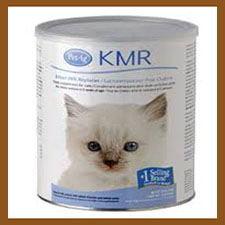 |
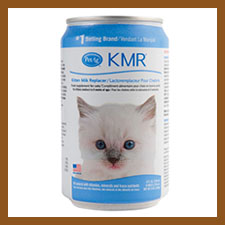 |
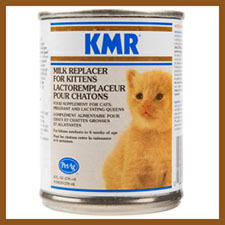 |
Emergency Kitten Milk Replacer |
HOMEMADE RECIPE FOR KITTEN FORMULA |
Do not feed raw egg whites, as a biotin deficiency may occur due to an enzyme in the white part of the egg. The enzyme is destroyed with cooking. Honey may contain bacteria, which may be fatal to the kittens.
** *REFRIGERATE any unused formula and make fresh formula if all is not used within 48 hours.
Hand Raising Newborn Kittens
For the first 10 days, weigh the kittens daily at the same time to monitor their weight gain. Then 3-4 times a week for another 10 days. The common first sign of illness is lack of weight gain or weight loss. Each kitten should gain 50-100 grams per week. By 14 days of age, the birth weights should be doubled. In general, if the kittens are not gaining weight, they need more food. If the kittens develop diarrhea, they may be overfed. Please keep your kitten warm before you start feeding.
| Kitten Feeding Schedule | ||||
Weeks Postpartum |
Type of Food |
Feedings/Day |
Volume of Formula/Meal |
Body Weight |
1 |
KMR |
9-12 |
1-7 ml |
100-200 grams |
2 |
KMR |
9 |
7-9 ml |
200-300 grams |
3 |
KMR; introduce solids |
9 |
10 ml |
300-360 grams |
4 |
KMR; solids |
7 |
10 ml |
350-420 grams |
Some kittens are too weak to nurse and will need to be tube fed. If you’ve never done this before, don’t try. Consult your veterinarian for instructions
FEEDING TIMES
Newborns:
O–2 weeks: 10 feeds in 24 hours at 2 – 2.5 hour intervals.
2–4 weeks: 7 feeds in 24 hours at 2.5 – 3.5 hour intervals
4–5 weeks: 5 feeds in 24 hours at 3.5 –5 hour intervals.
FEEDING
Warm formula but make sure it’s not too hot ! Use a plastic feeding tube – a 3 cc size is best but you can use a 1 cc size and you can obtain a tube from a vet or pharmacy. Kittens need to be fed every 2 – 3 hours until they are 4 weeks old. At 4 weeks old, you can introduce some canned cat food mixed with the baby kitten formula but supplement with the feeding tube until all kittens are fully able to eat enough on their own. They should be weighed on a kitchen scale each day and their weight recorded in order to make sure they are gaining. Consult a veterinarian if the kittens fail to gain weight, have diarrhea, continually vomit or sneeze.
Age In Weeks |
Average Weight of Kitten |
lbs. amount of Formula Per Day |
Number of Feedings Per Day |
1 Week |
4 oz. (113.3 g.) |
Approx. 32 ml |
8 |
2 Weeks |
7 oz. (198.3 g.) |
Approx. 56 ml |
6 |
3 Weeks |
10 oz. (283.5 g.) |
Approx. 80 ml |
4 |
4 Weeks |
13 oz. (367.9 g.) |
Approx. 104 ml |
3-4 |
5 Weeks |
16 0z. (453.6 g.) |
Approx. 128 ml |
3 |
For example, a 2 day old kitten requires 24mL of formula divided into 8 feedings, equaling 3mL per feeding (24 / 8 = 3) . In general, the kitten will need about 8mL per ounce of body weight per day.
Keeping Good Records
After every feeding, keep a record of how much the kitten has taken. This will help work out whether he’s getting enough throughout the day. Also, keep track of his development by weighing him at the same time every day using a small kitchen scale (or something similar to record small increments). Keeping track of his weight will help you identify any weight loss or potential problems quickly. Also, your doctor will be glad you kept these records in case any problems arise down the line.
Approximate Kitten Weight Chart **
Birth = approx. 3 oz. (0.25 lb)
1 week = approx. 4 oz. (0.25 lb)
2 weeks = approx. 7 oz. (0.5 lb)
3 weeks = approx. 10 oz. (0.5 lb)
4 weeks = approx. 13 oz. (0.75 lb)
5 weeks = approx. 16 oz. (1 lb)
8 weeks = approx. 2.5 lbs.
*** All these weights are approximate. Your kitten may be slightly over or under weight and still be perfectly healthy. If you have any concerns, or if the kitten just doesn’t seem “right”, consult your doctor.
http://www.thecatpracticepc.com/guides/orphans.pd
A newborn kitten is entirely dependent on its mother. The queen provides three vital requirements:
1. Warmth;
2. Food;
3. Stimulation of the bowel and bladder, and general hygiene.
STIMULATION
The kitten's natural mother takes care of both ends of her baby. By licking the kitten's abdomen, she stimulates the bowels and bladder and tidies up the resulting mess. A surrogate cat mom should gently rub the kitten's abdomen and bottom with a cotton ball or pad or tissues moistened with warm water. This stimulates the discharge of waste and keeps babies clean. Be careful to rub only enough to get them to expel waste materials. Keep the area clean and watch for chafing which might indicate that you are rubbing too hard or not cleaning well enough.
When you feed and clean the kittens, wash their fur all over with a barely damp towelette using short stokes as the mother would use. This cleans their fur, teaches them to clean their fur, and gives them a feeling of attention and well-being.
| FEEDING SYRINGE | CATAC ST1 |
 |
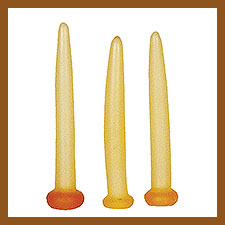 |
BACK TO TOP |
After every feeding your make sure you burp your kitten as they inhale air when feeding,
The Basics of Feline Nutrition by Lisa A. Pierson, DVM
Diet is the brick and mortar of health. This web page lays out some often-ignored principles of feline nutrition and explains why cats have a better chance at optimal health if they are fed canned food (or a balanced homemade diet) instead of dry kibble.
Putting a little thought into what you feed your cat(s) can pay big dividends over their lifetime and very possibly help them avoid serious, painful, and costly illnesses. An increasing number of nutrition-savvy veterinarians, including board-certified veterinary internists, are now strongly recommending the feeding of canned food instead of dry kibble.
The three key negative issues associated with dry food are:
1) water content is too low
2) carbohydrate load is too high
3) type of protein - too high in plant-based versus animal-based proteinsIn addition, dry food is very heavily processed which includes being subjected to high temperatures for a long time resulting in alteration and destruction of nutrients.
Dry food is also often contaminated with bacteria, fungal mycotoxins, storage mites/cockroaches and their feces, etc.
Where do you think kibble would reside in this scenario? Definitely not in the "perimeter"! There is nothing fresh about this source of food and it certainly does not come close to resembling a bird or a mouse.
Also keep in mind that dry foods are not refrigerated and they sit in warm warehouses, on pet store shelves, and in your cupboards for weeks or months before your pets consume them. Fats can easily become rancid, and bacteria will proliferate, in this type of environment.
There is no doubt that dry food is responsible for far more intestinal problems, and other diseases, than most veterinarians and cat owners realize.
Every living creature is “fine” until outward signs of a disease process are exhibited. That may sound like a very obvious and basic statement but if you think about it...
Every cat on the Feline Diabetes Message Board was “fine” until their owners started to recognize the signs of diabetes.Every cat with a blocked urinary tract was “fine” until they start straining to urinate and either died from a ruptured bladder or had to be rushed to the hospital for emergency cauterization.
Every cat with an inflamed bladder (cystitis) was “fine” until they ended up in pain, passing blood in their urine, and missing their litter box.
Every cancer patient was “fine” until their tumor grew large enough or spread far enough so that clinical signs were observed by the patient.
Every cat was ‘fine’ until the feeding of species-inappropriate, hyper allergenic ingredients caught up with him and he started to show signs of IBD (inflammatory bowel disease).
Every cat was "fine" until that kidney or bladder stone got big enough to cause clinical signs.
The point is that diseases 'brew' long before being noticed by the living being.
This is why the statement “but my cat is healthy/fine on dry food” means very little because I believe in preventative nutrition - not locking the barn door after the horse is gone. I don’t want to end up saying “oops……I guess he is not so fine now!!" when a patient presents to me with a medical problem that could have been avoided if he would have been feed a species-appropriate diet to begin with.
Of course, in order to be on board with the 'preventative nutrition' argument, a person has to understand the fact that carbohydrates wreak havoc on a cat’s blood sugar balance, that a urinary tract system is much healthier with an appropriate amount of water flowing through it, that cats inherently have a low thirst drive and need water *with* their food, and finally, that cats are designed to get their protein from meat – not plants.
Cats are obligate (strict) carnivores and are very different from dogs in their nutritional needs. What does it mean to be an ‘obligate carnivore’? It means that your cat was built by Mother Nature to get her nutritional needs met by the consumption of a large amount of animal-based proteins (meat) and derives much less nutritional support from plant-based proteins (grains). It means that cats lack specific metabolic (enzymatic) pathways and cannot utilize plant proteins as efficiently as animal proteins
It is very important to remember that not all proteins are created equal.
Proteins derived from animal tissues have a complete amino acid profile. (Amino acids are the building blocks of proteins. Think of them as pieces of a puzzle.) Plant-based proteins do not contain the full compliment (puzzle pieces) of the critical amino acids required by an obligate carnivore. The quality and composition of a protein (how many puzzle pieces it has) is also referred to as its biological value.
Humans and dogs can take the pieces of the puzzle in the plant protein and, from those, make the missing pieces. Cats cannot do this. This is why humans and dogs can live on a vegetarian diet but cats cannot. (Note that I do not recommend vegetarian diets for dogs.)
Taurine is one of the most important amino acids that is present in meat but is missing from plants. Taurine deficiency will cause blindness and heart problems in cats.
The protein in dry food, which is often heavily plant-based, is not equal in quality to the protein in canned food, which is meat-based. The protein in dry food, therefore, earns a lower biological value score.
***Because plant proteins are cheaper than meat proteins, pet food companies will have a higher profit margin when using corn, wheat, soy, rice, etc.
Veterinary nutritionists and pet food company representatives will argue that they are smart enough to know *exactly* what is missing from a plant in terms of nutrient forms and amounts - nutrients that would otherwise be in a meat-based diet. They will then claim that these missing elements are added to their diets to make it complete and balanced to sustain life in an obligate carnivore.
The problem with this way of thinking is that Man is just not that smart and has made fatal errors in the past when trying to guess how to compensate for such a drastic deviation from nature. Not all that long ago (1980s) cats were going blind and dying from heart problems due to Man's arrogance. It was discovered in the late 1980s that cats are exquisitely sensitive to taurine deficiency and our cats were paying dearly for Man straying so far from nature in order to increase the profit margin of the pet food manufacturers.
There are several situations that can lead to a diet being deficient in taurine but one of them is using a diet that relies heavily on plants as its source of protein. Instead of lowering their profit margin and going back to nature by adding more meat to the diets, the pet food companies simple started supplementing their diets with taurine. This is all well and good - for this particular problem - but how do we know that Man is not blindly going along unaware of another critical nutrient that is missing from a plant-based diet? Why is Man so arrogant that he thinks he can stray so far from what a cat is designed by nature to eat?
Let's also ask ourselves how many cats become ill or die from these species-inappropriate diets yet the patient's diet is never even questioned as a possible cause of the illness or death? We cannot answer that question definitively but I have no doubt that the answer would be "many".
Do cats survive on these supplemented plant-based diets? Yes, many of them do.
Do cats thrive on these diets? No, they do not.
Please pay special attention to the words *survive* versus *thrive* as there is a very big difference between the two states of health.
Another important issue with regard to the protein contained in a dry food is that it has been cooked at very high temperatures for a long period of time. This extensive cooking required to dry the product significantly decreases the biological value of the protein sources.
With regard to the overall protein amounts contained in a food, do not be confused by the listing of the protein percentages in dry food compared to canned food. At first glance, it might appear that the dry food has a higher amount of protein than the canned food—but this is not true on a which is the accurate way to compare the two foods. Most canned foods, when figured on a dry matter basis, have more protein than dry food. And remember, even if this were not the case, the percentage numbers do not tell the whole story. It is the protein’s biological value that is critical.
NOTE: If you want to switch up and add canned food we recommend grain free product such as Wellness cat food mixed in with the raw (small portion). The choice dry kibble is Orijen for in between feedings.
FOR KITTENS
ARE YOU FEEDING YOUR CAT TOO MANY CARBOHYRATES
In their natural setting, cats—whose unique biology makes them true carnivores--would not consume the high level of carbohydrates (grains) that are in the dry foods that we routinely feed them. You would never see a wild cat chasing down a herd of biscuits running across the plains of Africa or dehydrating her mouse and topping it off with corn meal gluten souffle.
In the wild, your cat would be eating a high protein, high-moisture content, meat-based diet, with a moderate level of fat and with only approximately 3-5 percent of her diet consisting of carbohydrates. The average dry food contains 35-50 percent carbohydrates. Some of the cheaper dry foods contain even higher levels. This is NOT the diet that Mother Nature intended for your cat to eat. A high quality canned food, on the other hand, contains approximately 3-5 percent carbohydrates.
Please note that not all canned foods are suitably low in carbohydrates. For instance, most of the Hill's Science Diet non-prescription (over-the-counter) and prescription diets are very high in carbohydrates and are not foods that I would choose to feed.
Cats have a physiological decrease in the ability to utilize carbohydrates due to the lack of specific enzymatic pathways that are present in other mammals, and the lack a salivary enzyme called amylase. Cats have no dietary need for carbohydrates and, more worrisome is the fact that too many carbohydrates can be highly detrimental to their health, as I explain below.
With this in mind, it would be as illogical to feed a carnivore a steady diet of meat-flavored cereals as it would be to feed meat to a vegetarian like a horse or a cow, right? So why are we continuing to feed our carnivores like herbivores? Why are we feeding such a species-inappropriate diet? The answers are simple. Grains are cheap. Dry food is convenient. Affordability and convenience sells.
But is a carbohydrate-laden, plant-based, water-depleted dry food the best diet for our cats? Absolutely not. Obligate carnivores are designed to eat meat – not grains - and they need to consume water with their food as explained below.
CATS NEED PLENTY OF WATER WITH THEIR FOOD
Another extremely important nutrient with respect to overall health is water. It is very important for a cat to ingest water with its food, as the cat does not have a very strong thirst drive. This is a critical point. This lack of a strong thirst drive leads to low-level, chronic dehydration when dry food makes up the bulk of their diet.
Cats are designed to obtain most of their water with their diet since their normal prey contains approximately 70 - 75 percent water. Dry foods only contain 10 percent water whereas canned foods contain approximately 78 percent water. Canned foods therefore more closely approximate the natural diet of the cat and are better suited to meet the cat’s water needs.
A cat consuming a predominantly dry-food diet does drink more water than a cat consuming a canned food diet, but in the end, when water from all sources is added together (what’s in their diet plus what they drink), the cat on dry food consumes approximately half the amount of water compared with a cat eating canned foods. This is a crucial point when one considers how common kidney and bladder problems are in the cat.
For more information on the above material please refer to: http://www.catinfo.org/
WHY FEED RAW?
It's what our pet carnivores evolved to eat. No man-made diet can hope to compare to fresh natural whole food. The benefits of a whole natural diet include improvements in multiple areas. Most people report significant improvements in all areas after switching to a whole natural diet. One of the simplest but most profound improvements is in dental health. Chewing whole raw meaty bones scrubs teeth better than brushing and flossing.
The periodontal disease suffered by most commercially-fed animals leads to heart, kidney, and liver disease, in addition to the painful gingivitis and tooth root abscesses typical of the kibble-fed pet. Studies have shown that over 80% of pets have periodontal disease by the age of 2. Foul breath is one of the outward symptoms of this deadly disease from which millions of commercially-fed pets suffer and die.
Raw fed pets typically have shiny teeth and healthy mouths. Because of this, they are at a lower risk of heart, liver, and kidney disease, to name but a few.
People who switch to raw feeding are often amazed at the difference in their pets' coats. They require less frequent bathing, smell better, and have softer thicker fur. Dogs and cats that had terrible skin issues before raw feeding often regrow their hair and heal from the chronic hot spots and infections.
WHY SWITCH TO RAW?
To have a happier, healthier pet with cleaner teeth, better coat, and fewer medical problems. So you can spend more time with your furry friend and less time grooming, scooping the yard, and visiting the vet to address problems caused by poor diet. Because you want your pet to live the longest, healthiest life possible.
This information was collected from http://www.rawfed.com/why.html
BACK TO TOP

HOME | ABOUT US | CONTACT US | ABOUT BENGALS | BENGAL HISTORY | DAMES | SIRES | KITTENS | PURCHASING | LINKS

HOME | ABOUT US | CONTACT US | ABOUT BENGALS | BENGAL HISTORY | DAMES | SIRES | KITTENS | PURCHASING | LINKS


